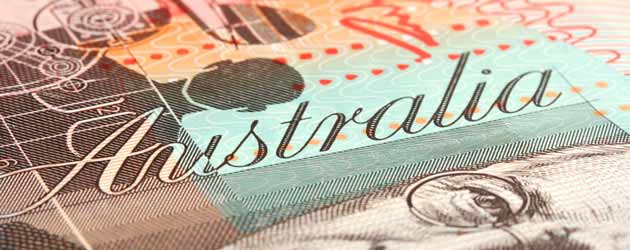
The Pound Sterling to Australian Dollar exchange rate slid by around -0.5 cents to 1.4775 (GBP/AUD) earlier this morning as the Reserve Bank of Australia announced that policymakers had decided to keep the benchmark interest rate on hold at 3.00%.
The decision was widely expected by markets in light of recent comments from RBA Governor Glenn Stevens suggesting that recent rate cuts are still working their way through the Australian economy.
During his accompanying speech this morning Stevens said:
“At today’s meeting, taking into account the flow of recent information…the Board judged that it was prudent to leave the cash rate unchanged.
During 2012, there was a significant easing in monetary policy. Though the full impact of this will still take some time to become more apparent, there are signs that the easier conditions are having some of the expected effects”.
The recent information that Stevens referred to was an encouraging rebound in Australian Retail Sales from -0.4% during December, to +0.9% during January.
The ‘Aussie’ was also boosted by a narrowing budget deficit from –AU$15048 million to –AU$14678 million in the fourth quarter of 2012, and a slight improvement in the AiG Performance of Service Index from 45.4 to 48.5 in February.
The Australian Dollar shed around -1.1 cents against the Pound during the day yesterday, with GBP/AUD rising to 1.4850, as Chinese stock markets declined by the most in over two years.
The Australian Dollar is often dictated by the performance of the Chinese economy, because it is Australia’s lucrative mining industry that fuels the Chinese dragon’s ever-expanding Manufacturing Sector. China is the largest driver of growth in the Asia-Pacific region, and a large portion of this economic output is leveled towards Australia, which boosts the export-driven Australian Dollar. Indeed, the ‘Aussie’ has appreciated by over 100 cents against the Pound over the past 10 years as economic growth has skyrocketed in China.
The Chinese CSI 300 Share Index fell by -4.6% yesterday, with the Shanghai Stock Exchange Property Index falling by a whopping -9.25%, as China’s State Council announced a new set of policies aimed at combatting the potential threat of a housing market crash.
With many ‘ghost cities’ popping up across the country featuring empty tower blocks, desolate roads, and fake shopping signs – designed to give the impression of a thriving metropolis – the risk of China’s property bubble bursting is becoming a real cause for concern. Property prices are rising fast, but much of the population outside of the big three urban conurbations – Beijing, Shanghai, and Shenzhen – are unable to afford the new buildings.
In order to cool property prices, and hopefully avoid a catastrophic crash similar to that which hit the US and many parts of the Eurozone in 2008, Chinese leaders have introduced a new set of rules to make property speculation more difficult in China. For buyers of second homes, deposit rates will be increased, interest rates will rise, and sales gains will be taxed by 20%.
The new rules led to declines for the commodity-driven Australian Dollar as markets contemplated the possibility that Chinese demand for Australia’s abundant mining exports could begin to curtail towards the end of the year.

Comments are closed.